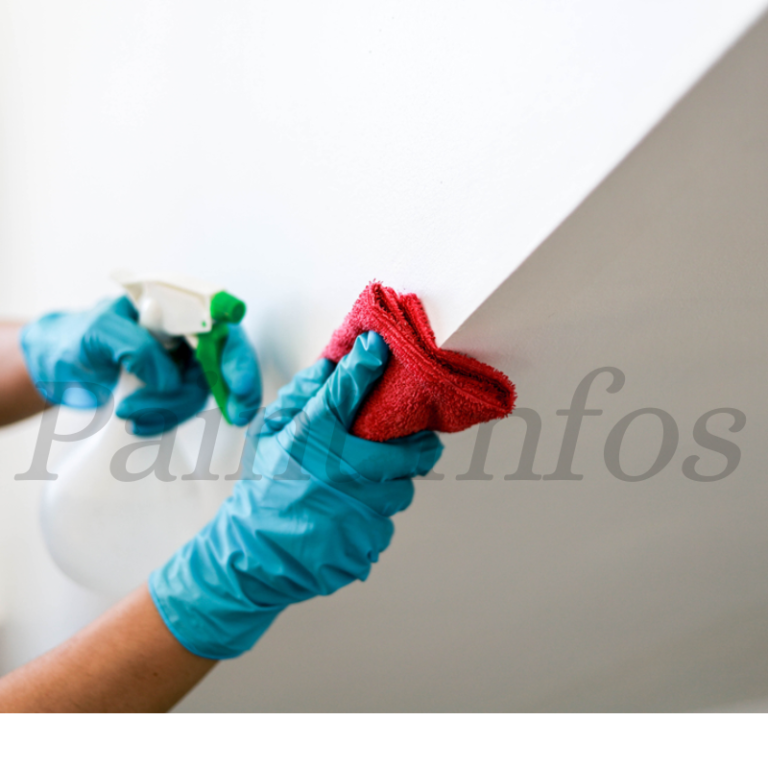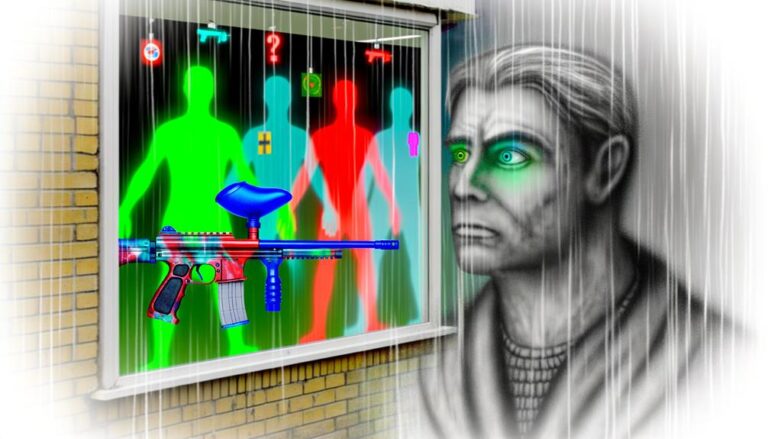A paint booth is a room where painting and other finishes are applied to products or surfaces. The booth protects the product from contaminants in the air and provides a controlled environment for painting.
Booths come in a variety of sizes and can be custom-built to accommodate large products or high volumes of production.
Most booths have an exhaust system that removes fumes and overspray from the air.
How Does a Paint Booth Work?
A paint booth works by providing a controlled environment for painting and other finishes.
The booth protects the product from contaminants in the air and provides a consistent temperature and humidity level.
Booths come in a variety of sizes and can be custom-built to accommodate large products or high volumes of production. Most booths have an exhaust system that removes fumes and overspray from the air.
The booths also have filters that remove particulates from the air before it is exhausted out of the room.
What is Needed for a Paint Booth?
Assuming you would like an in-depth answer:
A paint booth is a controlled environment where painting or coating operations are carried out. The key features of a good paint booth design include proper ventilation, temperature and humidity control, dust and overspray collection, fire prevention, and explosion protection.
The first step in designing a paint booth is to determine the type of painting or coating operation that will be performed. This will help to identify the specific hazards that need to be controlled. For example, if flammable or combustible liquids will be used, then special precautions must be taken to prevent fires and explosions.
Once the hazards have been identified, the next step is to select a location for the paint booth. It is important to choose a location that has good ventilation and enough space to accommodate the required equipment. The booth should also be located near other facilities such as restrooms and break rooms so that employees can take breaks as needed.
After choosing a location, the next step is to determine the size of the booth. The size will be determined by the amount of equipment that needs to be accommodated inside the booth. Once the size has been determined, it is time to select the type of ventilation system that will be used.
There are two types of ventilation systems: recirculating and exhausted. Recirculating systems recycle air within the booth while exhausted systems remove air from the booth and exhaust it outside.
The last step in designing a paint booth is to choose the type of finish that will be applied to surfaces inside the booth.
The most common finishes are powder coating and liquid painting. Each type of finish has its own set of requirements which must be met in order for proper adhesion and curing times .
How Does Ventilation Work in a Paint Booth?
In order for a paint booth to work properly, it must have proper ventilation. Ventilation in a paint booth works by drawing air in from the outside and exhausting it through filters back to the outside. This process is known as “negative pressure” and is essential for several reasons:
1. It prevents fumes and overspray from escaping the booth and contaminating the shop.
2. It keeps dust and other particulates out of the painting area, which would otherwise settle on wet paint and ruin the finish.
3. It provides adequate airflow so that drying time is minimized and curing time is maximized.
4. It helps maintain consistent temperatures throughout the booth, which is important for both safety and product quality.
What are the 3 Types of Paint Booths?
There are three types of paint booths: enclosed, semi-enclosed, and open. Enclosed paint booths are the most expensive and provide the best protection from fumes and overspray. Semi-enclosed paint booths provide good ventilation but may not be as effective at keeping out fumes and overspray.
Open paint booths are the least expensive but also offer the least protection from fumes and overspray.
How Long Does It Take for Paint to Dry in Paint Booth?
Assuming you are referring to an automobile paint booth, the time it takes for the paint to dry will vary depending on a number of factors. These include the type of paint being used (lacquer, enamel, urethane, etc.), the temperature and humidity in the booth, the amount of ventilation, and so on. In general, though, most paints will take around 30 minutes to an hour to dry completely in a paint booth.
How to Build a Paint Booth Exhaust System
Building a paint booth exhaust system is not as difficult as it may seem. With a little planning and the right materials, you can easily build a system that will capture and remove paint fumes from your workspace.
The first step is to choose an appropriate location for your exhaust system.
The best location is usually near the ceiling, so that the fumes have to travel upwards before being captured by the exhaust fan. Make sure that there are no windows or doors in the vicinity, as this will allow fresh air to enter and dilute the fumes.
Once you have chosen a location, mark out the area where your exhaust fan will be installed.
Cut a hole in the ceiling or wall large enough to accommodate your fan, and then seal around the edges with weatherstripping or caulk.
Now it’s time to install your fan. If you’re using an inline fan, simply attach it to one end of your ducting material.
If you’re using a wall-mounted fan, mount it according to the manufacturer’s instructions, then attach one end of your ducting material to the outlet port on the back of the fan.
Next, run your ducting material through holes drilled in any intervening walls until you reach the exterior of your building. At this point, seal around all openings with weatherstripping or caulk to prevent outside air from entering into your booth.
Finally, attach an external vent cover over the outlet port on the side of your building – this will help deflect any incoming wind away from directly blowing into your booth through the vent opening.
Paint Booth Air Flow Requirements
Whether you’re a body shop, collision center or auto dealership, having the right paint booth is critical to your business. But what many people don’t realize is that the air flow in your paint booth is just as important as the booth itself.
To ensure that your paint booth meets all air flow requirements, there are a few things you need to know.
Here are the basics of paint booth air flow requirements:
1. Airflow Rate
The first thing you need to know is the minimum airflow rate required for your specific type of paint booth.
This will be determined by the size of your booth and the type of painting being done. Make sure you consult with a professional to determine the correct airflow rate for your needs.
2. Static Pressure
Another important factor in ensuring proper air flow in your paint booth is static pressure. This measures how much resistance there is to airflow within the space. The higher the static pressure, the harder it will be for air to move through the space – which can lead to problems with painting quality and drying time.
3. Filter Efficiency
It’s also important to make sure that your filters are working properly and are efficient enough for your specific needs . The wrong filter can cause all sorts of problems, from decreased air flow to poor painting quality .
Again , this is something you’ll want to consult with a professional about before making any decisions .
Osha Paint Booth Air Flow Requirements
OSHA Standards for Paint Booths
To ensure the safety of workers in paint booths, the Occupational Safety and Health Administration (OSHA) has established specific standards. Employers must provide a well-ventilated area with proper air flow to remove dangerous fumes and vapors created by painting operations.
The minimum air flow rate for a paint booth is 100 feet per minute. This can be achieved through a combination of exhaust fans and make-up air units. The size and number of fans will vary depending on the size of the booth and the type of painting being done.
In addition to providing adequate ventilation, employers must also take steps to keep workers safe from fire hazards. Paint booths must be equipped with fire extinguishers, and all flammable materials must be stored properly.
Homemade Positive Pressure Paint Booth
A paint booth is one of the most important pieces of equipment in a auto body shop. It provides a controlled environment for painting vehicles. A well-designed and -operated paint booth can help achieve consistent, high-quality results, improve productivity, and protect workers from exposure to hazardous materials.
A typical paint booth has four main components: an intake plenum, exhaust plenum, work area, and controls. The intake plenum draws in air that is then filtered to remove contaminants before entering the work area. The work area is where the vehicle being painted is located.
The exhaust plenum removes fumes and overspray from the work area. Controls regulate the airflow through the booth and maintain the proper temperature and humidity levels.
Booths can be either positive or negative pressure.
In a positive pressure booth, filtered air flows into the work area at a higher rate than exhausted air leaves the booth. This keeps contaminants out of the Booth while allowing fresh air to circulate around the vehicle being painted. Negative pressure booths operate similarly but with reversed airflow; more air is exhausted than drawn in.
This can be less effective at keeping contaminants out but may be necessary if there are strong draft sources near the Booth (e.g., open doors).
Conclusion
A paint booth is a controlled environment where painting and finishing work is carried out. The purpose of a paint booth is to protect the operator from exposure to hazardous fumes, ensure adequate ventilation of flammable vapors, and provide an environment conducive to producing a high-quality finish.
Paint booths typically have several components, including an exhaust system, filters, lighting, and controls.
The exhaust system removes fumes and particulates from the air in the booth. The filters remove contaminants from the incoming air supply. Lighting is used to evenly illuminate the work area and improve color matching.
Controls regulate temperature and humidity in the booth to prevent defects in the finished product.


